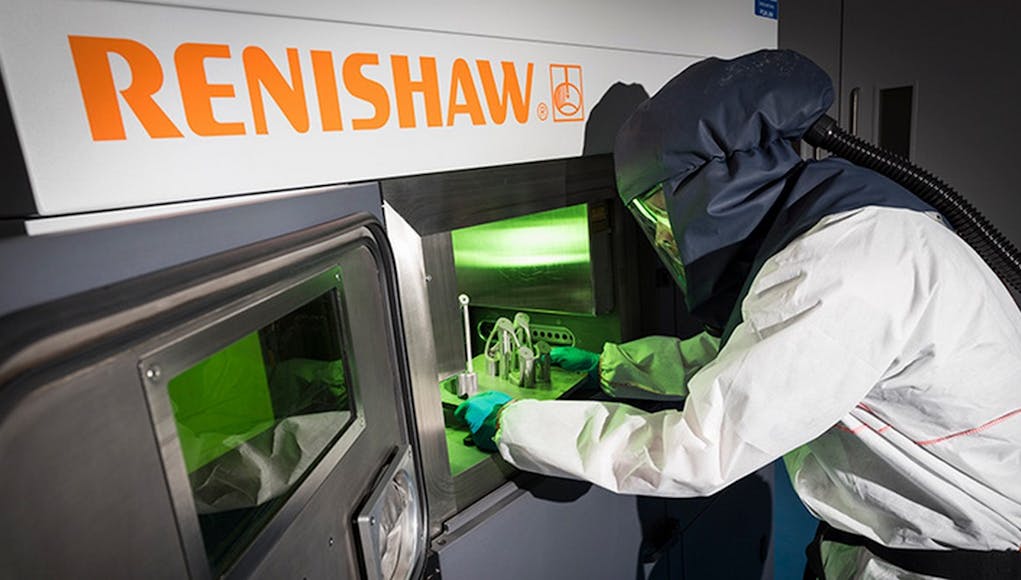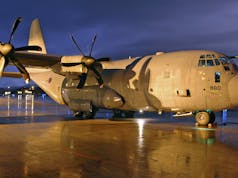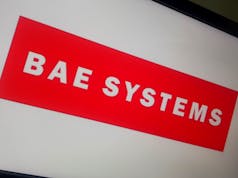BAE say they have signed an agreement to work with Renishaw to work together on the development of additive manufacturing (otherwise known as 3D printing) capability for the defence and aerospace sector.
The firm say that the move is designed to “help improve performance, reduce costs and speed up manufacturing processes on combat aircraft of the future”.
The Memorandum of Understanding (MoU) lays the framework for us to bring together world-leading expertise in additive manufacturing (AM, also known as 3D printing) to maximise the application of this novel emerging manufacturing technique. The agreement also opens up opportunities for joint research and development.
The MoU was signed by Manufacturing & Materials Strategy & Technology Director for BAE Systems, Andy Schofield, and Will Lee, Chief Executive, Renishaw, during a visit to our manufacturing facilities in Samlesbury, Lancashire.
Andy Schofield said in a release:
“Additive manufacturing has and will continue to deliver significant benefits to our sector. Renishaw is a world leader in additive manufacturing and we have been impressed with the quality of parts produced on its machines. This agreement allows us to create a more open and collaborative environment to share ideas and knowledge. In an environment of fast developing technology and challenged budgets, collaboration and innovation are absolutely essential in order to retain cutting edge capability. I’m really excited by the potential this partnership has to help us deliver that.”
Will Lee said:
“We have a great relationship already with BAE Systems, developed over many years through the application of our metrology products and have more recently worked with them on evaluating and understanding the performance envelope of our AM systems. We are delighted that they have been impressed with our systems, and this, together with our vision for AM development, has led to the strengthening of our collaboration. We look forward to the exciting opportunities that this strategic collaboration presents to further develop AM technologies for demanding aerospace production applications.”
According to a news release from the firm:
“The site is already home to several Renishaw advanced AM machines which form part of a 1,000 square metre dedicated New Product Development & Process Development Centre (NPPDC), where the latest emerging technologies and processes such as AM and Virtual Reality are explored and tested for application into aircraft design and manufacture. With a particular focus on additive manufacturing, investments into technologies like those provided by Renishaw help to ensure we remain at the cutting edge of aerospace manufacturing, exploiting the latest technologies and processes to continually improve its advanced manufacturing capabilities.
We began research into additive manufacturing techniques more than two decades ago and are currently using the technology to make production standard components for the Typhoon fighter aircraft. It is also applied in the rapid prototyping of new technology concepts as part of a drive to deliver Tempest – a capable, affordable and exportable next generation future combat air system.”









Surprised that the carriers haven’t been fitted with 3 D metal printers. Would save the Navy a shed load of money in the long run.
With BAE Systems is the lead member of the Aircraft Carrier Alliance, this might be possible in the future Farouk.
being the lead member, sorry!
I know DSTl and the Navy are using 3D (plastic) printers to manufacture a number of tertiary items that are now starting to be used on ships. The process has mostly been used to make initial prototypes used to check the fit of a new item, before it is manufactured in metal. They have been investigating suitable materials to use in the maritime environment, especially if the item is in contact with salt water, which can de-laminate certain PLA materials. One of the new materials is Nylon with carbon fibre or kevlar strands embedded within it. It significantly increases the strength and raises its safe working temperature over traditional plastic additive materials.
For aircraft, the CAA will only authorise certain materials to be used on aircraft and only on secondary structures (non-load bearing). This is because the material can have non-uniform and variable yield strengths. We have a few years to go, but the concept is very exciting. Hopefully in the next few years they can produce materials that behave more like fabricated materials with uniform grain structures. As that will be the real breakthrough, imagine if you could just print out a frame or aircraft spar with zero waste and precision?
Davey,
Many thanks
And with the addition of 1500 extra staff being assigned to the programme, it’s beginning to sound like full steam ahead with Tempest.
We live in hope!
This is great news for my firm SPI Lasers which are supplying Rennishaw with the laser OEMs for their systems. Soon we will be sending one to the Space station as well. Good news for British jobs all round.